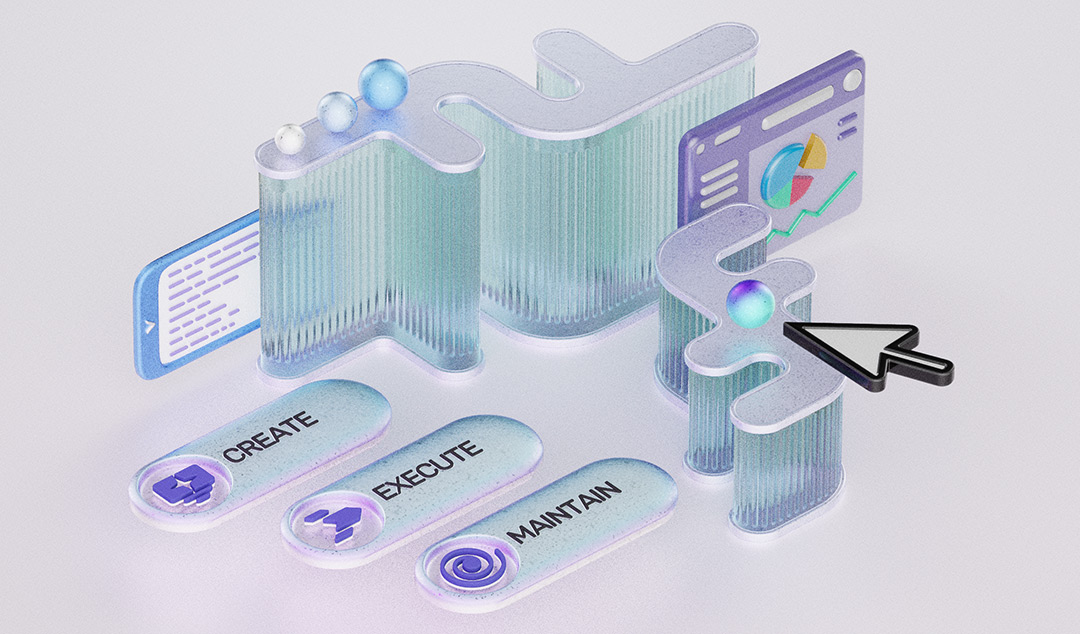The Death of Traditional QA
Revolutionize QA: Discover how agentic AI is replacing traditional testing, cutting costs, and accelerating releases. Stay ahead or fall behind!

Agentic AI is the Future
The quality assurance industry stands at its "Kodak moment": a point of technological disruption happening in plain sight while many players refuse to acknowledge the fundamental shift occurring beneath their feet.
Just as Kodak invented the digital camera but couldn't abandon its film business model, today's QA industry clings to legacy approaches while agentic AI promises to transform software testing entirely.
The evidence is clear: legacy testing platforms are fundamentally incompatible with modern development, agile sprints and AI-driven code development. While development teams have moved to cloud-native, AI-accelerated workflows, the testing industry remains anchored in with 2006 methodologies. This disconnect isn't just inefficient, it's unsustainable. Organizations still allocate 30-50% of their engineering budgets to QA but still suffer from fragile, script-heavy testing approaches.They are operating under a model that AI has already made obsolete.
The transformation ahead isn't incremental improvement. It's a complete operational and mindset shift from rule-based scripting to autonomous, intelligent agents that can think, adapt, and scale. For enterprise leaders, the question isn't whether this change will happen, it's whether your organization will lead the transformation or be the last one at the table.
The Great Divide: Cloud Reality vs. Legacy Mindsets
The modern software development landscape has fundamentally transformed, yet the testing industry operates as if it's still 2008. This disconnect creates a widening chasm between how applications are built and how they're tested.
The On-Premises vs. Cloud-Native Reality
Development teams today build cloud-first applications using microservices, containerization, and continuous deployment pipelines. They leverage AI-powered coding assistants, automated infrastructure provisioning, and real-time collaboration tools that operate at unprecedented scale and speed. These teams expect their testing infrastructure to match this release velocity and sophistication.
Meanwhile, most testing platforms still operate through on-premises architectures. They require extensive setup, manual configuration, and script-based approaches that assume linear, waterfall-style development cycles. This architectural mismatch is more than just technical inconvenience, it is fundamentally incompatible with modern development practices and slows down innovation and product releases.
The core problem is that legacy script-based test platforms will never catch up to a true cloud-based agentic testing platform. The data requirements alone clearly show their limitations in this new agentic world. Effective AI-powered testing requires access to petabytes of contextual application data, real-time learning from production environments, and the computational resources to process this information at scale. Legacy testing platforms, built for scripted automation on-prem, rather than intelligent decision-making, just don’t have any context. And context is what matters in an agentic world. .
Why Legacy Platforms Cannot Adapt
The challenges facing traditional testing platforms go far beyond feature updates or interface improvements. They represent fundamental architectural and data limitations that cannot be resolved through incremental changes or bolting on AI from a popular LLM.
The Data Problem: Context at Scale
Effective agentic AI testing requires access to massive datasets of contextual application behavior. Modern AI testing platforms leverage years of specialized development and petabytes of enterprise application data to create highly contextualized and custom-tailored models specific to test automation. This data includes user interaction patterns, application state changes, error conditions, and recovery scenarios across thousands of applications and millions of test executions. This extensive data provides the context for a true agentic model.
Legacy platforms lack this foundational data advantage. They were built for scripted automation, capturing limited metadata about test execution rather than rich contextual information about application behavior. Without this data foundation, they cannot train or deploy the sophisticated AI models required for autonomous testing and can only rely on general foundation models without proper context.
The data challenge extends beyond volume to velocity and variety. Agentic AI testing platforms must process real-time application changes, adapt to dynamic user interfaces, and learn from production environment behaviors. Legacy architectures, designed for batch processing of predefined test scripts, often only running on-premise, cannot handle this dynamic data processing requirement.
The Architecture Problem: Scripts vs. Agents
Traditional testing platforms operate on a scripted automation model: predefined sequences of actions executed in specific orders. This approach assumes stable, predictable application behaviors and requires extensive maintenance when applications change. They rely on fixed element data like locators to describe the application.
Agentic AI platforms operate fundamentally differently. They deploy specialized AI agents that make autonomous decisions based on real-time application analysis which includes hundreds of data points about each element, not just a fixed locator. These agents don't follow scripts—they interpret requirements, explore application functionality, and adapt their testing approach based on what they discover.
This architectural difference cannot be bridged through feature additions or bolting on general AI models. Legacy platforms would require complete rebuilds to support agentic capabilities, essentially abandoning their existing technology investments.
The Economic Reality: Valuation Compression
Legacy testing companies face inevitable lower valuations as their fundamental product value proposition becomes obsolete. Many are already "selling for pennies on the dollar" as investors recognize the limited future growth potential in script-based testing approaches.
This economic pressure creates a vicious cycle. Reduced valuations limit investment in research and development, making it even harder to compete with well-funded AI-first platforms. The result is a gradual decline in market position and customer satisfaction.
Forward-thinking organizations recognize this trend and evaluate their testing partners accordingly. Betting on legacy platforms means accepting gradually declining capabilities and increasing competitive disadvantage.
The New Testing Paradigm: From Scripts to Agents
The transition from traditional QA to agentic powered test platforms represents more than a basic technology upgrade, it's a fundamental reimagining of how software quality is delivered for modern organizations.
Autonomous Decision-Making vs. Rule-Based Execution
Traditional testing follows predetermined paths: if X condition exists, execute Y action sequence. This approach works for stable applications with predictable user flows but breaks down in any modern application where the user interface changes frequently and features are added in near real-time.
Agentic AI testing platforms deploy specialized agents that make autonomous decisions based on current application states and testing objectives. A create agent generates tests from natural language requirements while an execute agent runs these tests using sophisticated models that dynamically re-map UI elements and handle unexpected conditions. Diagnose agents identify root causes of failures without human intervention. Maintain agents suggest self-healing updates to keep tests current. A document agent generates comprehensive audit trails automatically.
This agent-based architecture delivers capabilities impossible with script-based approaches. Tests adapt to application changes automatically, coverage expands based on discovered functionality, and test maintenance becomes largely autonomous. Organizations report moving from manual testing cycles requiring months to near in-sprint automation for their critical applications.
Context Over Generic Models: Specialized vs. Foundation Models
Many testing platforms claim AI capabilities by integrating generic foundation models for basic script generation. This approach fundamentally misunderstands the requirements for effective AI testing. Generic models lack the specialized knowledge of application testing patterns, user interaction flows, and quality assurance best practices that you can only get from a highly contextualized small AI/ML model.
Effective agentic AI testing requires models trained specifically on enterprise application data with deep understanding of testing methodologies. These specialized models achieve accuracy rates exceeding 99.97% for element identification which isa critical capability for reliable autonomous testing. They understand the nuances of different application frameworks, common failure patterns, and optimal testing strategies for various scenarios.
The difference in outcomes is dramatic. Organizations using specialized AI testing models report achieving 80-90% autonomous QA operations with minimal human intervention. Those relying on generic models struggle with accuracy, maintenance overhead, and limited coverage expansion.
CPU Optimization: Making AI Testing Economically Viable
Early AI testing implementations often required expensive GPU infrastructure, making them economically unfeasible for large-scale enterprise deployment. Modern agentic AI platforms have solved this challenge through sophisticated CPU optimization techniques and distilled smaller models that can execute on GPU much more efficiently.
These optimizations enable organizations to deploy AI testing at enterprise scale without prohibitive infrastructure costs and with much higher fidelity due to the specialized models. Tests run efficiently on standard cloud computing resources, making the economics favorable even for massive test suites. Organizations report running thousands of tests with small engineering teams which is virtually impossible with traditional approaches.
The economic advantage compounds over time. As test coverage expands and application complexity increases, CPU-optimized AI testing maintains consistent performance characteristics while script-based approaches continue to face exponential maintenance costs and do not benefit from any cloud or AI-driven scalability advantages.
What Forward-Thinking Companies Are Doing
Leading organizations across industries have moved beyond pilot programs to full-scale agentic AI testing deployments. Their experiences provide clear roadmaps for others considering similar transformations.
Early Adopter Strategies and Competitive Advantages
GE Healthcare exemplifies the transformative potential of agentic AI testing. They operate 6,000-8,000 automated tests with just 12 engineers, adding approximately 50 new tests monthly for new application features and functionality. This represents productivity improvements of 87% compared to their previous testing approaches. More significantly, they've achieved this scale while improving test coverage and reducing defect rates which were impossible through previous traditional testing methods.
The pharmaceutical industry provides another compelling example. Companies like Norstella leverage agentic AI testing for applications where quality directly impacts revenue generation and business continuity. In regulated industries where testing failures can result in compliance violations and market delays, the reliability and coverage advantages of AI testing become critical competitive differentiators and a business accelerator.
These early adopters share common strategic approaches. They begin with revenue-generating or business-critical applications where quality improvements deliver immediate business value. They invest in organizational change management to help teams transition from script-based to agent-based thinking. Most importantly, they measure success not just in testing efficiency but in overall business outcomes like release velocity, defect rates, and customer satisfaction.
Real Customer Transformation Examples
Customer transformations reveal the practical reality of agentic AI testing deployment. Organizations typically begin with specific use cases—critical user journeys, regression testing suites, or high-maintenance test scenarios. They look for immediate improvements in test reliability and maintenance requirements as early indicators of success with the new approach.
Success breeds expansion. As teams gain confidence in agentic capabilities and mature in their transformational journey, they apply AI testing to broader application coverage. Importantly, the autonomous nature of the platform means this expansion doesn't require proportional increases in engineering resources. Organizations report achieving comprehensive application coverage with testing teams one-tenth the size previously required with legacy approaches.
The most successful deployments focus on an organization’s business outcomes rather than technical metrics. Teams measure success through improved release velocity, reduced production defects, and enhanced customer satisfaction scores. These business-focused metrics align testing investments with organizational objectives and demonstrate clear return on investment.
Making the Transition: A Strategic Framework
Organizations serious about agentic AI testing transformation need structured approaches that address technical, organizational, and strategic considerations simultaneously.
Timeline for Market Transformation
Industry analysis suggests the testing market will undergo fundamental transformation within 1-2 years. This timeline is driven by several converging factors: AI development acceleration, increased enterprise AI adoption, competitive pressure from early adopters, and the compound benefits of autonomous testing approaches.
Organizations have a narrow window to establish agentic AI testing capabilities before the transformation becomes a survival requirement rather than competitive advantage. Those who wait risk being forced into reactive adoption when their current testing approaches become clearly inadequate.
The transformation timeline varies by industry and organization size. Technology companies and organizations with AI-first development practices can deploy agentic testing within months. Larger enterprises with complex legacy applications may require 6-12 month transition periods. Regulated industries need additional time for compliance validation and risk assessment.
Evaluation Framework: Current Position Assessment
Organizations should evaluate their readiness for agentic AI testing across several dimensions. Technical readiness includes current testing infrastructure, application architecture, and data accessibility. Organizational readiness encompasses change management capabilities, engineering team composition, and leadership commitment to transformation. The impact on change management for agentic technologies cannot be understated as many organizations will see significant reallocation of personnel roles and responsibilities.
Market readiness considers competitive dynamics, customer expectations, and industry transformation pace. Organizations in rapidly evolving markets face greater pressure to adopt advanced testing approaches quickly. Those in stable industries have more time for gradual transitions but risk sudden competitive disadvantage if they delay too long.
The evaluation should identify specific use cases where agentic AI testing delivers immediate value. These pilot implementations provide proof-of-concept validation while building organizational confidence in the technology. Successful pilots create momentum for broader deployment across additional applications and teams. Top organizations assign key executive sponsors and dedicated teams that are carved out from existing operating teams to ensure organizational bias and inertia does not impact the transformation initiative.
Implementation Strategy: Phased Deployment
Successful agentic AI testing implementations follow phased deployment strategies that minimize risk while maximizing learning. Phase one focuses on specific applications or testing scenarios where AI capabilities deliver clear advantages. This phase validates technical capabilities while building team expertise and buy-in.
Phase two expands coverage to additional applications and testing scenarios. Organizations use learnings from phase one to optimize deployment approaches and address organizational challenges. This phase typically sees significant productivity improvements as teams become proficient with agentic testing approaches, however the risk of complacency and pushback increases as the project moves from a dedicated team to the broader team(s).
Phase three achieves comprehensive deployment across all major applications and testing requirements. Organizations at this phase report achieving 80-90% autonomous testing operations with minimal human intervention. They've transformed QA from an engineering burden to a product management function that operates efficiently at scale.
The Choice Is Now: Transform or Be Transformed
The testing industry's transformation isn't a future possibility, but rather a current reality that forward-thinking organizations are already implementing. The key question facing enterprise leaders is how quickly their organization will adopt agentic AI to replace traditional testing approaches.
Organizations that act now position themselves for sustainable competitive advantages. They'll achieve dramatically reduced QA costs from 30-50% of engineering budgets to less than 10%, while simultaneously improving test coverage, release velocity, and software quality. These compound benefits create lasting market advantages that become increasingly difficult for competitors to match.
The alternative is gradual obsolescence. Organizations that delay agentic AI testing adoption will find themselves increasingly disadvantaged as competitors achieve superior quality outcomes with lower resource requirements. The testing talent they depend on will migrate to organizations using modern approaches. Their testing infrastructure will become increasingly expensive to maintain while delivering diminishing returns.
The transformation window is narrow but still open. Enterprise leaders have the opportunity to evaluate their current testing approaches, assess agentic AI alternatives, and begin the transition before it becomes a crisis response. Those who recognize this moment and act decisively will shape the future of software quality in their organizations and industries.
The death of traditional QA isn't a distant threat, it's happening now. The only question is whether your organization will be part of the transformation or a casualty of it.











